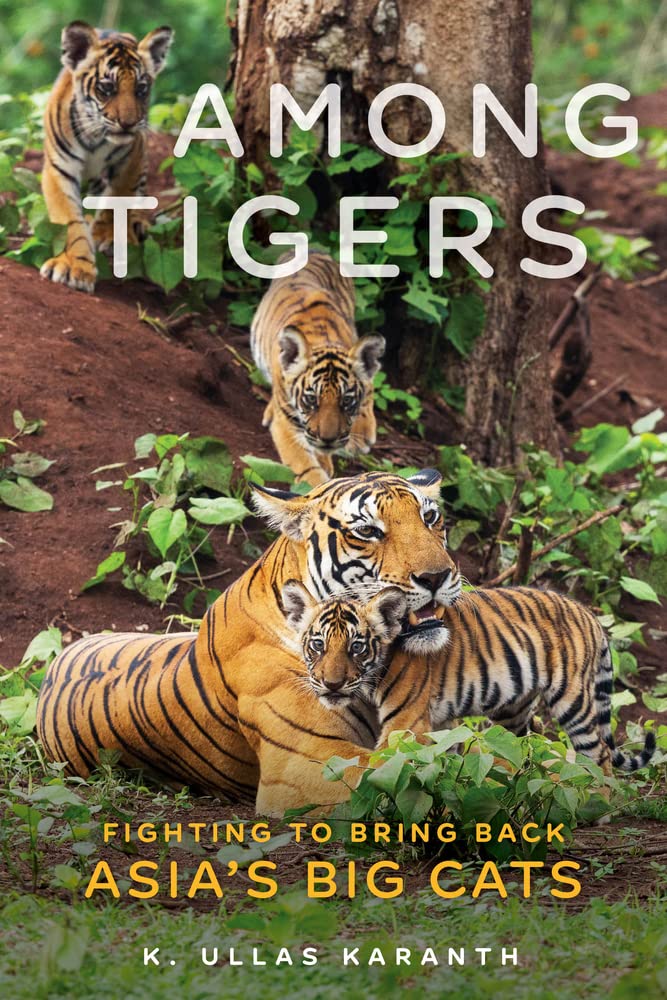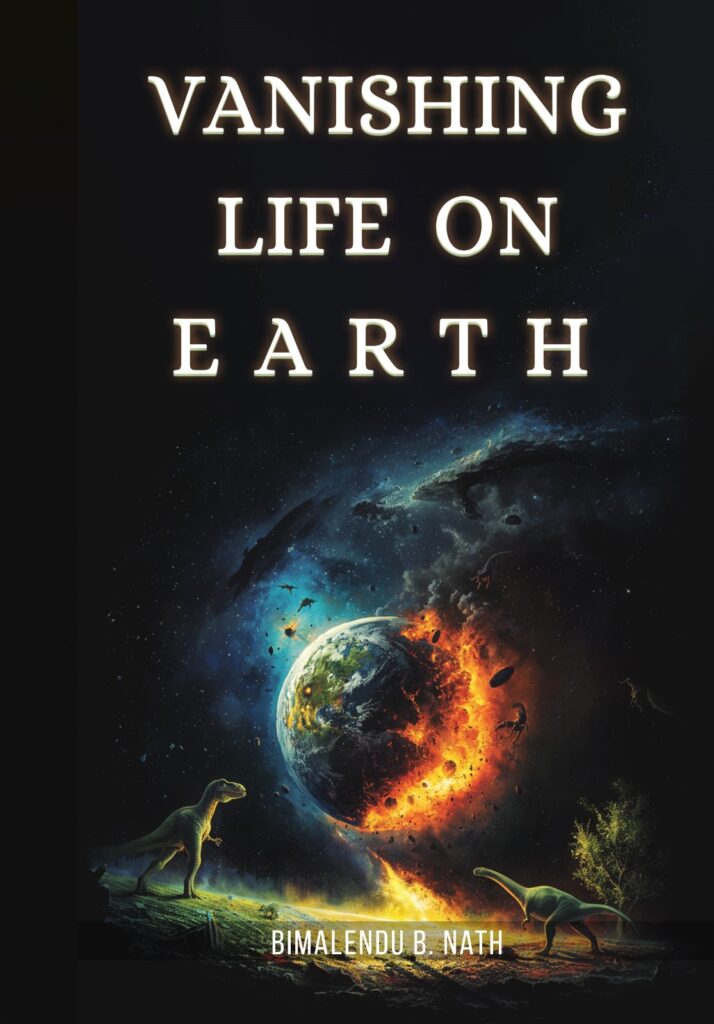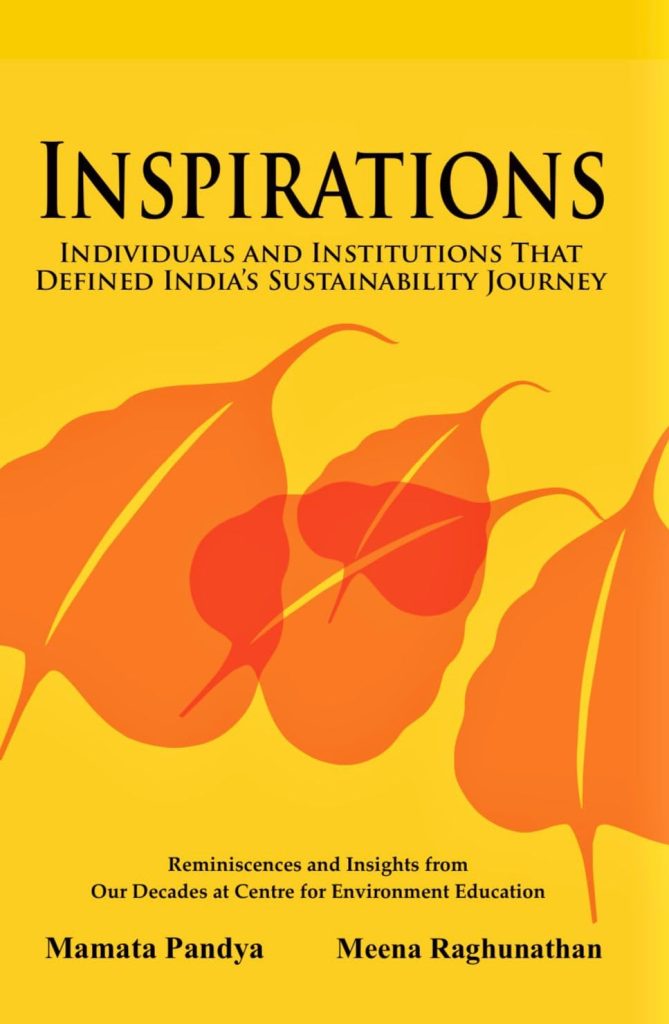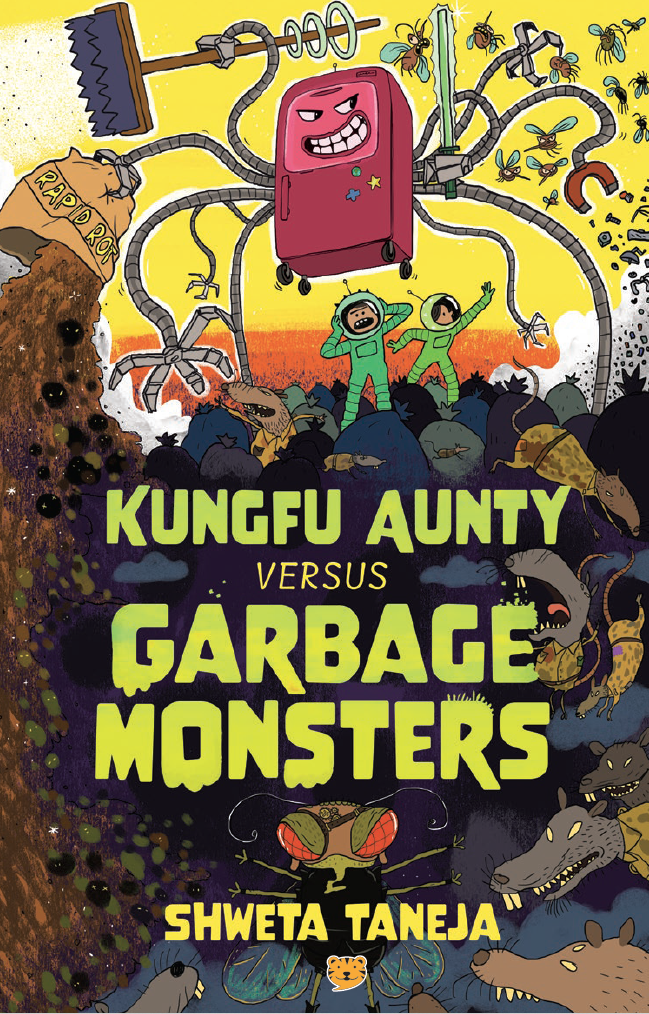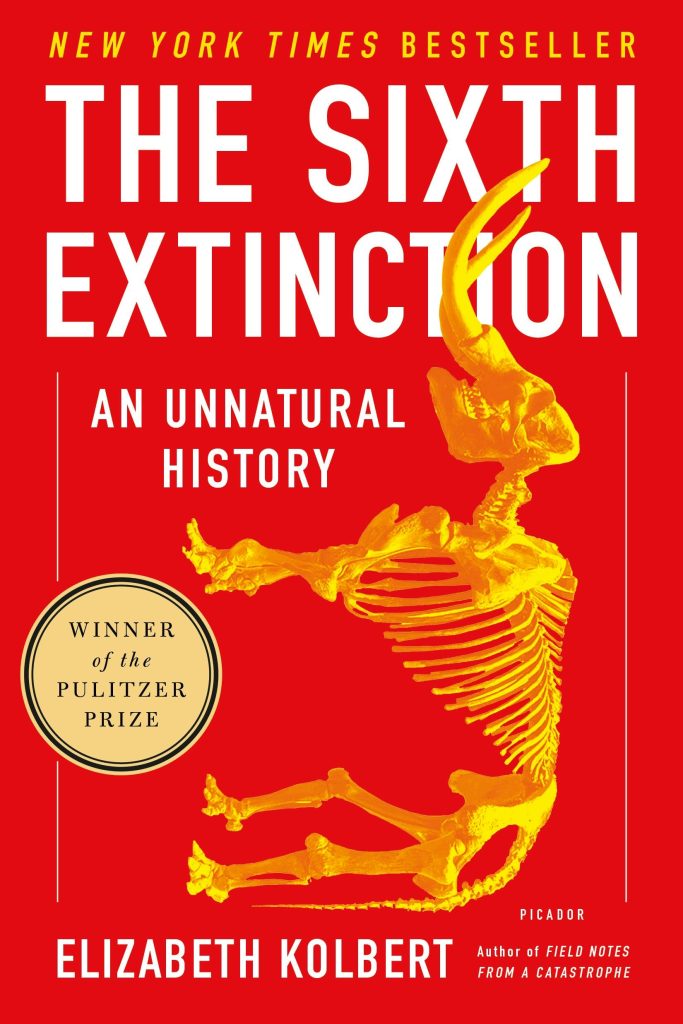Among Tigers is an engrossing and captivating book by Dr. K. Ullas Karanth, one of the world’s finest tiger biologists and conservationists. It chronicles Karanth’s lifelong mission to save India’s wild tigers from extinction, as well as his transformation from an engineer to a conservationist. Spanning nine chapters, the book touches upon myriad aspects of tiger biology, ecology, evolution and conservation, while also taking readers on a journey through some of Karanth’s most poignant experiences and learning curves, which have made him the tiger expert he is today.
Karanth provides eloquent and detailed descriptions of capturing tigers and being the first one to radio collar them in India. He articulates the entire process of a ‘tiger beat’—which involves tranquillising the tiger—and explains how it combines modern scientific methods and technologies with ancient hunting techniques and jungle craft practised by local communities. He darted his first tiger, Mudka, in the Nagarhole Tiger Reserve in 1990, followed by three more—Sundari, Das, and Mara—detailing their physical traits and the compassion and caution with which he and his team captured and radio-tagged them.
Karanth also touches upon his association with his team members, many of whom came from indigenous communities. While appreciating their jungle craft and traditional knowledge, he also expresses views that place the onus of the historical decline of tigers in India on oppressed and marginalised communities. Although he mentions sport and trophy hunting by native kings and colonial overlords, he subtly shifts the larger blame onto the subaltern classes. This perspective tends to whitewash the deeds of colonial officials and privileged Indian royalties, who often butchered hundreds of tigers and other wildlife for entertainment.
Throughout the book, Karanth consistently acknowledges Mel Sunquist— a professor of wildlife ecology at the University of Florida— from whom he learned the art of tracking tigers and the professionalism required for capturing animals. He emphasises his responsibility as a scientist towards the well-being of captured animals and the safety of his team.
Pratibha, Karanth’s wife, is a key figure in his life, who remained a pillar of strength despite his prioritisation of tigers and work over family. He frequently expresses deep gratitude towards her, yet also regrets being an emotional burden and not a responsible husband and father during his professional hardships. This struggle to balance work and family, especially in conservation, is something that is rarely discussed.
Tiger census
A staunch critic of the highly inaccurate pugmark count census used by the state forest departments, Karanth pioneered camera trapping to estimate tiger numbers in India. This was an important period in his life, and he discusses the hardships of being villainized after a series of tiger deaths in the early 1990s, following the death of his first radio-collared tiger, Mudka, which led to the project’s termination by the state forest minister. Tribal youth protested against him with slogans like “Karanth the Tiger Killer” and “Karanth the Enemy of the Tribal.” Local tabloids defamed him with sensational headlines such as “Blood on the Collar” and “Karanth’s Tiger Scandal,” which eventually reached national media.
He felt targeted due to his upper caste background, especially by a Dalit forest minister—a perspective that seems exaggerated and unfairly puts marginalised communities on the spot. These assertions need careful scrutiny because they risk oversimplifying the socio-political dynamics and may inadvertently reinforce caste-based biases. In 2004, Karanth and his colleagues were charged with financial irregularities and trespassing in the park, which he claims were plotted by the mining mafia and corrupt forest officials. It took nine years of legal struggle to get acquitted in 2013.
This struggle for academic freedom transformed Karanth into a conservationist who needed powerful connections to navigate such challenges. He writes: “Conservation theory preached from academic ivory towers was not of much use to the practice of conservation in the real world. Every step toward being an effective conservationist made it harder for me to pursue my science.”
This insight is crucial for anyone wanting to engage in conservation beyond academia. Conservation theory has its limitations, and applying this knowledge in practice is an entirely different challenge. Dealing with various stakeholders can be tremendously stressful, often requiring one to compromise on moral values, become part of the system and engage in political manoeuvring, as the logic of science does not work everywhere.
On the conservation front, Karanth realised that making indigenous allies is crucial for tiger conservation. He began networking to integrate indigenous social movements with conservation efforts, believing that the survival of tigers must align with the needs and aspirations of the communities living in tiger habitats. However, this optimistic view and goodwill toward the communities seem paradoxical to some of his other views expressed in the book.
Fortress conservation
The last three chapters of the book are filled with statements and opinions that support old-time, colonial, preservationist and exclusive models of conservation. I found striking parallels between Karanth’s grand wish of having 15,000 tigers in India and Prof. E.O. Wilson’s ‘Half-Earth Theory’.
Prof. Edward Osborne Wilson— a renowned evolutionary biologist and researcher— is widely known for his work in biodiversity and conservation. In one of his most influential ideas, the Half-Earth Theory, he proposed that in order to preserve our planet’s biodiversity, half of the Earth’s surface should be designated as protected areas devoid of human presence. While this theory aims to curb the mass extinction of species by providing undisturbed habitats, it has been widely criticised for its exclusion of human communities, particularly indigenous and local populations who have coexisted with these ecosystems for millennia.
Karanth and Wilson, both in their respective magna opera, have strongly opposed people-centric conservation approaches and favour only science-based wildlife conservation which has no place for the concept of coexistence or even cohabitation. Both vehemently pitch for “fortress conservation” with exclusive areas for wildlife without humans and propose the so-called “voluntary relocation” or the displacement of some of the most marginalised communities from their lands.
Both Karanth and Wilson support large, corporate-style conservation NGOs with histories of racial and ethnic oppression. They criticise social scientists, undermining the importance of integrating social sciences and humanities into conservation. Karanth goes so far as to mock social scientists and activists as “emancipators”, claiming that they deprive marginalised communities by promoting traditional practices and human-animal coexistence. Both Karanth and Wilson tend to blame habitat degradation and declining wildlife on indigenous communities without acknowledging and introspecting on their own privileged identities, positionalities and socio-economic capital.
The most striking convergence between Karanth and Wilson lies in their unwavering belief in the capitalist mode of production and governance, coupled with their recurrent disdain for socialist ideology. Wilson’s vision for large-scale conservation aligns with capitalist principles of efficiency and control, often at the cost of social equity and justice. Similarly, Karanth’s writings echo these sentiments, dismissing the critical role of social equity in conservation efforts. Their optimistic reliance on the supposed benefits of a free-market capitalist economy is paradoxical and deeply flawed.
By advocating for the exclusion of people from natural habitats, they undermine the pursuit of socio-ecological justice and conveniently overlook the fundamental causes of the climate crisis and biodiversity loss. This oversight neglects the reality that under capitalism, both human and non-human nature suffer profoundly. The battle for nature conservation is inextricably linked to the struggle for social justice, as one cannot exist without the other. Their perspectives, thus, highlight a significant disconnect between their conservation ideals and the broader imperative for equitable and just environmental stewardship.
Given India’s dense population and socio-political challenges, Karanth’s ideas of creating exclusive tiger habitats and promoting voluntary relocations appear increasingly unrealistic. His vision of establishing 15,000 tigers in the country overlooks the fact that most tiger habitats are inhabited by people. Achieving this ambitious target would inevitably clash with the needs and livelihoods of marginalised communities. His fortress conservation model does not align with contemporary practices that prioritise community involvement and sustainable development.
Today’s conservation landscape emphasises integrating scientific research with community engagement and socio-economic considerations. While Karanth’s contributions remain invaluable, his vision for tiger conservation must evolve to embrace the complexities of contemporary India. Instead of creating inviolate areas excluding humans, promoting coexistence between tigers and local communities is imperative. This approach ensures long-term tiger survival while safeguarding human livelihood and safety by fostering tolerance and resilience.
In conclusion, Among Tigers is a thought-provoking book that offers an intimate and insightful look into one of the world’s most awe-inspiring creatures. It is more than just a repository of scientific knowledge; it is a heartfelt narrative reflecting Karanth’s deep connection with tigers. The book’s strength lies in provoking critical thinking about the broader implications of conservation. Karanth’s forthright opinions on fortress conservation and conservation-induced displacements may be polarising, yet they compel readers to reflect on the ethical and practical dimensions of modern conservation.
Ultimately, Among Tigers leaves readers with a profound appreciation for the complexities of wildlife conservation and a renewed sense of urgency to protect tigers. Karanth’s writing is eloquent and detailed, and is highly recommended for anyone interested in the journey of a wildlife biologist. The book serves as a powerful reminder that effective conservation requires not only scientific expertise but also unwavering commitment, passion, resilience and adaptability to make a real change.
Further Reading
Dattatri, S. 2024. ‘We can easily reach 10,000 tigers’: Dr K. Ullas Karanth. Frontline. https://frontline.thehindu.com/environment/conservation/interview-dr-k-ullas-karanth-leading-tiger-expert-we-can-easily-reach-10000-tigers/article66763095.ece.
Karanth, K. U. 2016. Among Tigers: Fighting to Bring Back Asia’s Big Cats. Chicago Review Press.
Wilson, E. O. 2016 . Half-Earth: Our Planet’s Fight for Life. WW Norton.
